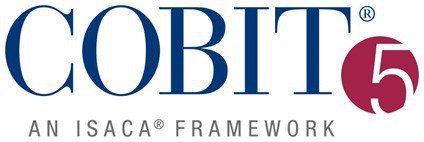It may well be the 21st century, and the subject of Enterprise Architecture (EA) is no longer a new concept, but I recently learned that mis-perceptions around what EA actually is are still prevalent… Imagine then the challenge in trying to promote the value of integrated EA and IT Governance to interested stakeholders. Unexpectedly, those conversations were forced to begin with a discussion, and in many cases an explanation, on what this apparently somewhat mythical EA is all about. So what is EA?… seemingly a good question to ask.
It may come as a surprise to learn that EA has been around for just over a quarter of a century and not a handful of years as many think, and that EA is not only an information technology (IT) architecture despite the many inferences to the contrary. Perhaps oddly, in a time of cryptic acronyms and thesaurus type rhetoric for naming very simple things in technology and business, EA is really just what the name implies – an architecture of the entire Enterprise.
Much like COBIT 5 is the de-facto business framework for the Governance and Management of Enterprise IT, EA is most commonly and generally referred to as a framework for Enterprises to use in architecting the optimal operating or business model and systems to meet the vision, mission, and business goals, and to deliver the strategy, of the Enterprise – on an ongoing, perpetual basis. Put another way, EA is a business and technology discipline that organizations need to entrench into their strategic, tactical and operational practices such that they are continuously re-architecting the Enterprise to best meet the ever changing demands of the business. It may be news to you, but EA is anything but static!
Governance, in all its guises, most certainly remains a hot topic the deeper into the 21st century we go. Enterprise Governance, or “corporate governance” which is the preferred universal term, has come on leaps and bounds but not everyone has put two and two together… and linked Enterprise Governance and EA, or for that matter EA and IT Governance. But it’s time they should, after all, integration is where the value opportunities really start to get exponential…
Whilst many EA frameworks exist, like Zachman, FEA, Gartner, when talking about EA and specifically in the context of COBIT 5, I like to focus on what I consider the umbrella, open industry standard framework of The Open Group Architecture Framework (TOGAF). In TOGAF, EA Governance ensures alignment with business and stakeholder needs, greater transparency of accountabilities, better control of risks and resources, and ultimately value creation. Contrast that with COBIT, its latest incarnation being COBIT 5, whose focus has shifted on to Governance of Enterprise IT, and the primary objective of value creation by realizing benefits, and optimizing risks and resources. More than a match, indeed, and this is exactly why such synergy between EA and IT Governance exists – value, value, and more value.
What many fail to realise, is that EA is already tightly integrated into the COBIT 5 business framework. Within the Align, Plan and Organize domain of the COBIT 5 Management area, there is a dedicated process called Manage Enterprise Architecture defined to establish a common enterprise architecture consisting of business process, information, data, application and technology architecture layers for effectively and efficiently realising enterprise and IT strategies. And for this EA process there are five key Management practices and a host of activities for each of those. The Manage Enterprise Architecture process supports the achievement of all IT Goals, which in turn support the achievement of Enterprise Goals.
But it doesn’t stop there…Within the Evaluate, Direct, Monitor domain of the COBIT 5 Governance area, EA is deeply and directly incorporated into the Resource Optimization process and associated activities. The inclusion and integration of EA into COBIT 5 is no accident, and clear parallels can be drawn between the foci of both in terms of business and technology. COBIT 5 is focused enterprise wide, end-to-end on both business and IT, covering the entire organization and provides a solid basis for integrating other frameworks, and specifically the point in case being EA. COBIT 5 not only consolidates all major ISACA frameworks, but aligns with other major frameworks like TOGAF® for EA, enabling a single overarching framework for the Enterprise.
As COBIT 5 is by definition a business framework for the Governance and Management of Enterprise IT, it can be said that TOGAF is a business framework for the Governance and Management of Enterprise Architecture. The overarching objective of both COBIT 5 and EA is value creation, and to ensure that the requirements for the governance of Enterprise IT and EA are in place to achieve the enterprise’s mission, goals and objectives. Like IT governance, EA governance is a subset of Enterprise Governance, and their effective integration supports the governance of the enterprise as a whole and therefore the creation of value for the organization. There’s no question that EA and IT Governance go hand in hand, and if I were looking for a readily available, proven, integrated solution for value creation in the Enterprise on a sustainable basis, there would be no better starting point than COBIT 5 – bringing IT Governance (and Management) and EA together!
For information on COBIT 5 please visit http://www.isaca.org/COBIT and you can get ISACAs free to download COBIT 5 Toolkit here at http://www.isaca.org/COBIT/Pages/Product-Family.aspx
If you enjoyed this post, read more from Mike Lane with this White paper "The COBIT Enterprise: Decision to Implement" which asks ‘What role does IT Governance play in this realization and how do we implement it in our Enterprise?'




.png)


